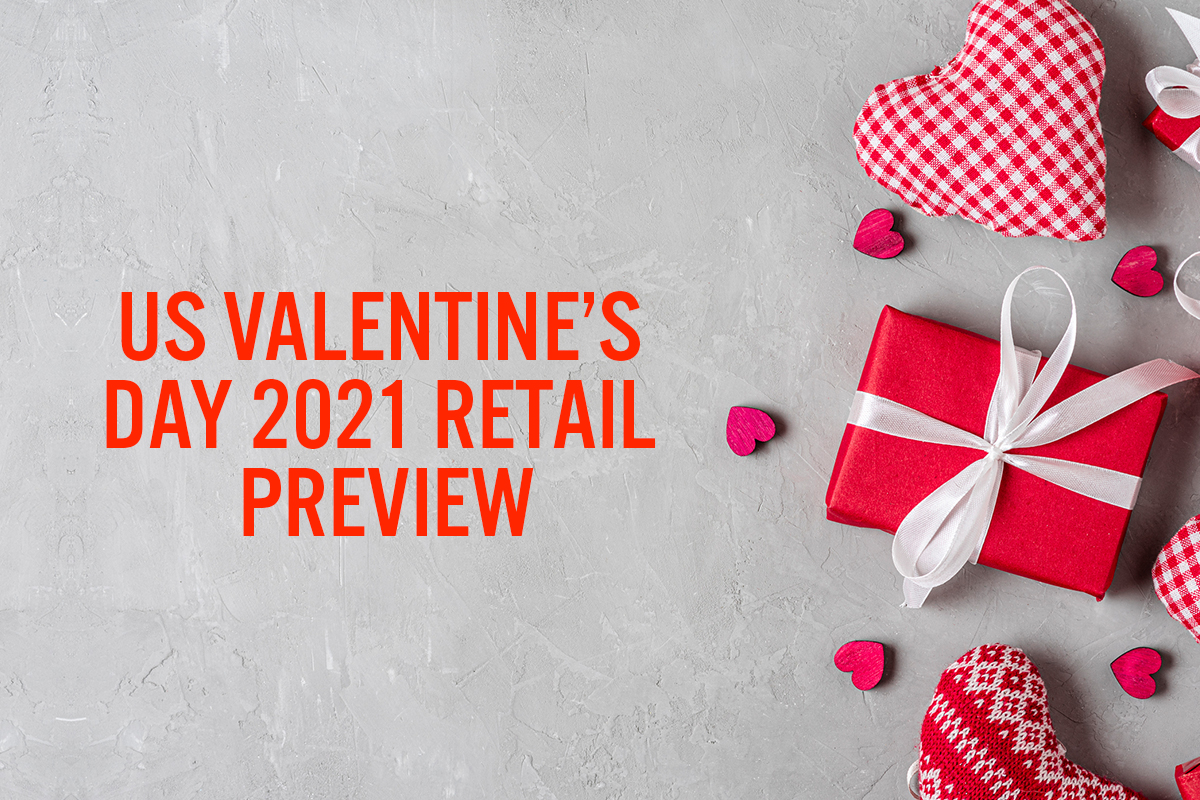
DIpil Das
What’s the Story?
Valentine’s Day has been a growing retail holiday in the US over the past decade. Valentine’s Day 2020 was a record-breaking year, seeing more than a 20% increase in sales from 2019. While many shoppers will have to forgo concerts, shows or romantic getaways due to Covid-19 restrictions, we expect Valentine’s Day to still be a strong retail holiday in 2021.Why It Matters
US retailers typically use Presidents’ Day (the third Monday in February) to offer some of their steepest discounts and, so, drive sales and clear winter stock. This year, Presidents’ Day (February 15, 2021) falls directly after Valentine’s Day (February 14, 2021), giving retailers a long weekend to take advantage of both events simultaneously in the middle of the month.US Valentine’s Day 2021 Retail Preview: In Detail
Last year saw strong Valentine’s Day sales, with the average Valentine’s Day shopper spending nearly $200 on the event—a 21% increase from 2019, according to the National Retail Federation (NRF). Experiences such as romantic dinners, concerts, movies, shows and trips were among some of the most popular gifts. According to Statista, 62% of Valentine’s Day Internet shoppers spent money on an experience. We expect Valentine’s Day to see some shifts in 2021 due to Covid-19. The most notable of these is that pandemic-related restrictions will limit consumer spending on events and experiences. However, Valentine’s Day is likely to remain a strong event for retailers, with a new Coresight Research survey finding that around 51% of consumers expect to celebrate the holiday this year.Estimated Spending for Valentine’s Day 2021
According to our survey, most Valentine’s Day shoppers are expecting to spend a similar amount for the holiday to what they spent last year. However, we found that 23.2% of respondents expect to spend less on Valentine’s Day this year, a higher proportion than the 11.4% who expect to spend more.Figure 1. US Consumers Who Expect To Spend on Valentine’s Day 2021: How Much They Expect To Spend vs. 2020 (% of Respondents) [caption id="attachment_122742" align="aligncenter" width="725"]
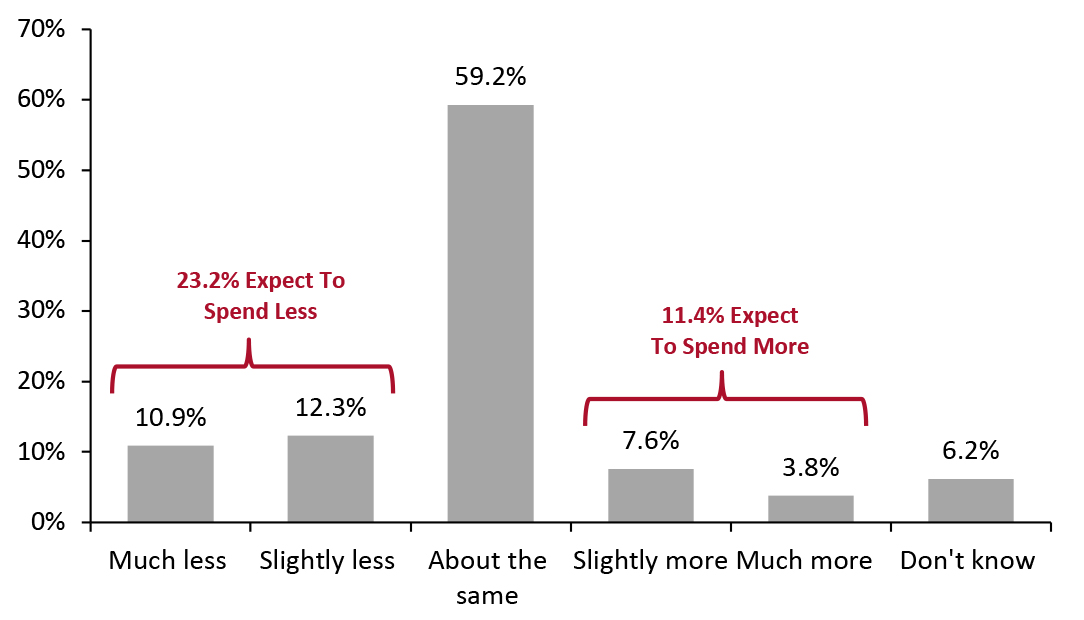 Base: 211 US consumers aged 18+ who expect to spend on Valentine’s Day 2021, surveyed in January 2021
Base: 211 US consumers aged 18+ who expect to spend on Valentine’s Day 2021, surveyed in January 2021 Source: Coresight Research [/caption] Driven by reduced spending on services, total Valentine’s Day spending looks set to contract this year. After increasing by an estimated 21% to $27.4 billion in 2020, total spend for the 2021 holiday, which includes services spending, will amount to an estimated $21.8 billion, according to the NRF. Despite the 20% contraction, this total would see spending on Valentine’s Day 2021 exceed any years prior to 2020 (see Figure 2). We do not expect spending demographics to see significant changes from last year. According to the NRF, on Valentine’s Day 2020, the biggest spenders were those aged 35–44 years, who said they would spend an average of $358.78, followed by the 25–34 age group, at $307.51. These age groups generally have higher incomes and may buy for family members such as children. The lowest average spenders among those expecting to spend for Valentine’s Day are aged 65 years and older, at just $99.14.
Figure 2. US: Estimated Total Spend (Left Axis; USD Bil.) and Average Spend (Right Axis; USD) on Valentine’s Day-Related Purchases [caption id="attachment_122743" align="aligncenter" width="725"]
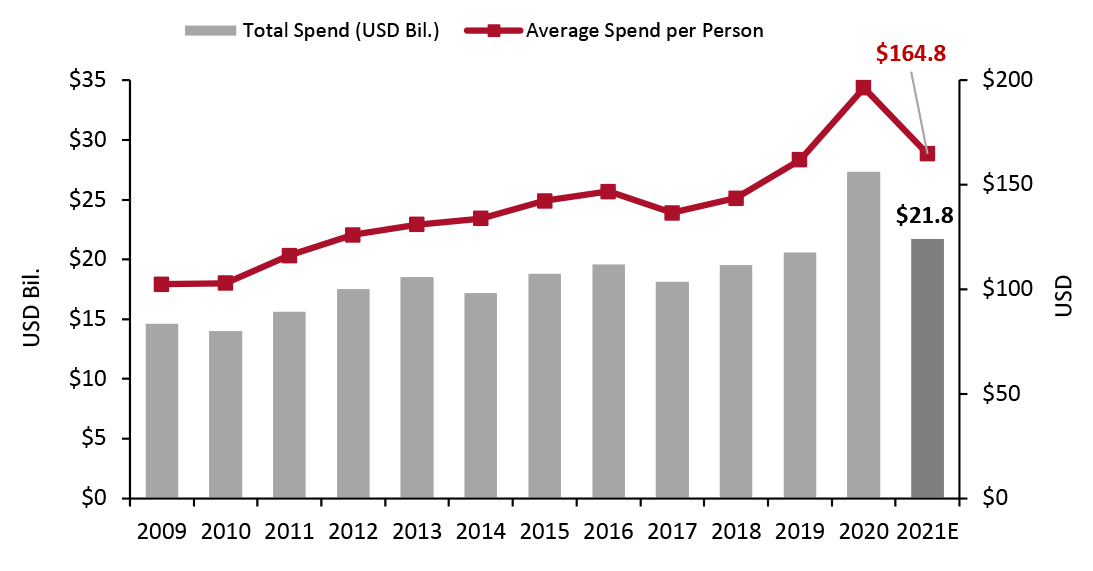 Source: NRF/Prosper Insights & Analytics[/caption]
Valentine’s Day Shopping: Which Retailers and Channels Consumers Expect To Shop
Over half of consumers that expect to spend on Valentine’s Day 2021 expect to do so online, although the majority of those shoppers expect to shop both online and in-store. In total, 50.7% expect to shop online (whether wholly or partly) and 62.1% expect to shop in a store (wholly or partly).
Source: NRF/Prosper Insights & Analytics[/caption]
Valentine’s Day Shopping: Which Retailers and Channels Consumers Expect To Shop
Over half of consumers that expect to spend on Valentine’s Day 2021 expect to do so online, although the majority of those shoppers expect to shop both online and in-store. In total, 50.7% expect to shop online (whether wholly or partly) and 62.1% expect to shop in a store (wholly or partly).
Figure 3. Consumers Who Expect To Spend on Valentine’s Day 2021: Which Channel They Expect To Use for Valentine’s Day Shopping (% of Respondents) [caption id="attachment_122744" align="aligncenter" width="725"]
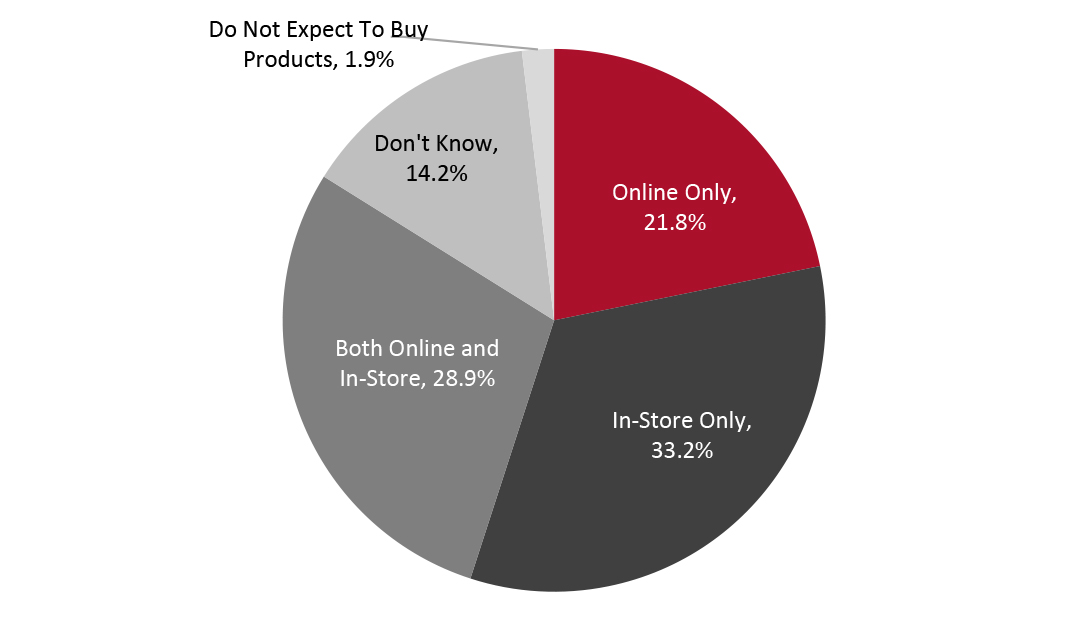 Base: 211 US consumers aged 18+ who expect to spend on Valentine’s Day 2021, surveyed in January 2021
Base: 211 US consumers aged 18+ who expect to spend on Valentine’s Day 2021, surveyed in January 2021 Source: Coresight Research [/caption] Grocery retailers and supermarkets are likely to be the biggest go-to destinations when it comes to Valentine’s Day purchases: In our recent survey, nearly half of respondents who expect to buy products for Valentine’s Day plan to shop for gifts at grocery stores. This was followed by online-only retailers (34.4% of Valentine’s Day shoppers) and other specialty stores (19.2%) such as greeting cards or electronics stores. Just over 18% of Valentines’ Day shoppers expect to shop at department stores, which have historically generated the highest revenue by store category.
Figure 4. Consumers Who Expect To Spend on Valentine’s Day 2021: Where Consumers Expect To Shop (% of Respondents) [caption id="attachment_122745" align="aligncenter" width="725"]
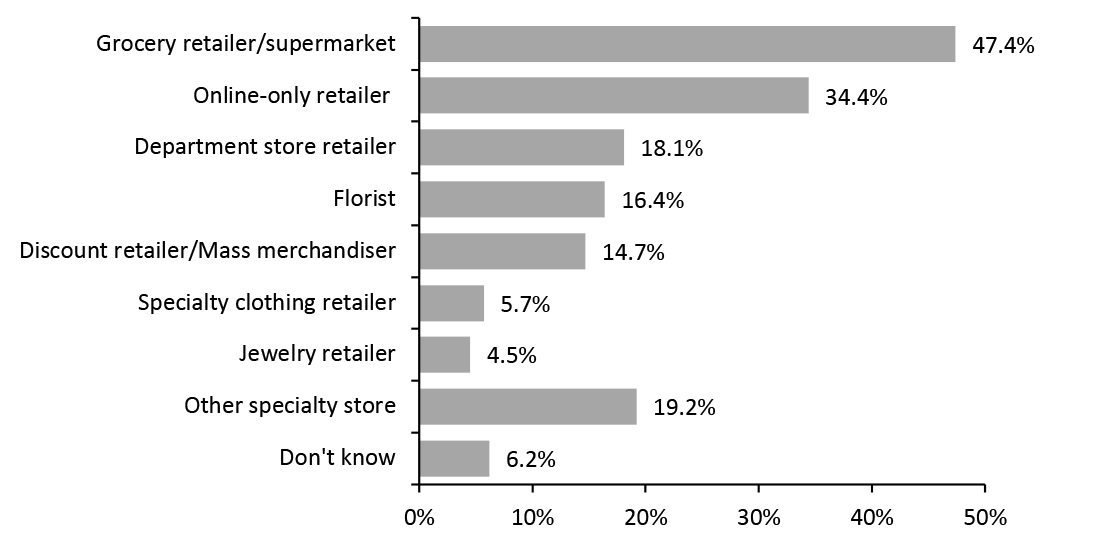 Base: 177 US consumers aged 18+ who expect to buy products for Valentine’s Day 2021, surveyed in January 2021
Base: 177 US consumers aged 18+ who expect to buy products for Valentine’s Day 2021, surveyed in January 2021 Source: Coresight Research [/caption] Valentine’s Day Gifting: Consumer Spending and Product Categories Recent years have seen an increase in Valentine’s Day spending for non-romantic relationships. According to an NRF survey, Valentine’s Day shoppers expect to only spend slightly more than 50% of their total holiday spend on their romantic partner in 2021. As shown in Figure 5, this means that nearly half of the Valentine’s Day gift market will comprise spending on non-romantic gifts—such as for family members, friends, classmates, teachers, co-workers and even pets—totaling around $10 billion.
Figure 5. US Valentine’s Day: Spending on Gifts by Recipient, 2021E (USD Bil.) [caption id="attachment_122746" align="aligncenter" width="725"]
 Source: NRF [/caption]
Source: NRF [/caption]